Kakunodate
| Travel Reports by Chashitsu | view profile of Chashitsu |
| previous post |
| next post |
| Note: The opinions and views expressed in this user report are those of the individual author and do not necessarily reflect the opinions and views of japan-guide.com. |
April 25, 2016 - Kakunodate
Kakunodate I hear you say, where is it? It is a small town, population 14,000 in Akita province, northern Honshu. Just take the Tohoku shinkansen from Tokyo and turn left at Morioka through the mountains. It developed as an Edo period castle town, although the castle no longer exists and is known for itfs well preserved samurai quarter and sakura, which appears at the end of April and early May. I checked the internet sakura reports earlier in my travels, only to discover that the sakura had already reached itfs peak and re-arranged to visit at an earlier date. The journey takes some 3 hours, the train splitting at Morioka, half destined for Akita and the other half for Aomori. The journey through the mountains is spectacular.

The Hinokinai-gawa river provides an attractive vista with its line of river bank cherry trees. This extends some 2km on the river bank and under storey planting of daffodils with people picnicking on the bank. Not far away and parallel to the river is the Uchimachi districtfs main Buke Yashiki dori with itfs Edo period thatched wooden samurai houses, traditional black wooden walls and moss covered gates, lined with weeping cherry trees. The most northerly of these is the Ishiguro house, the oldest and the highest ranking samurai house in the town and is partially open to the public, acting as a living museum of samurai culture. The family are still in residence.
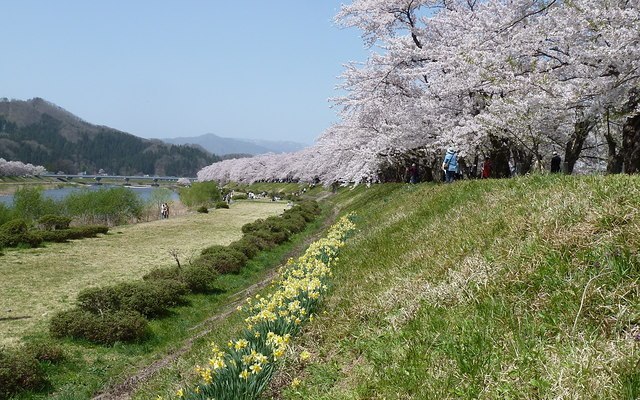

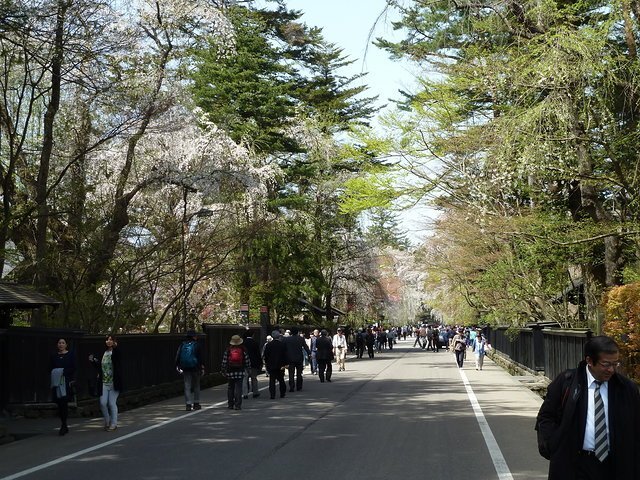
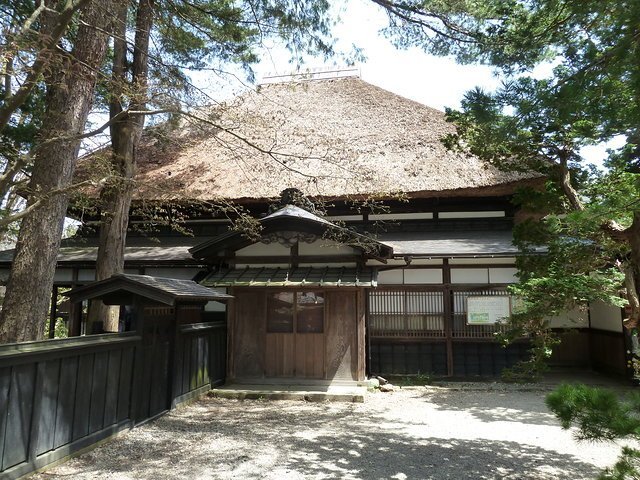
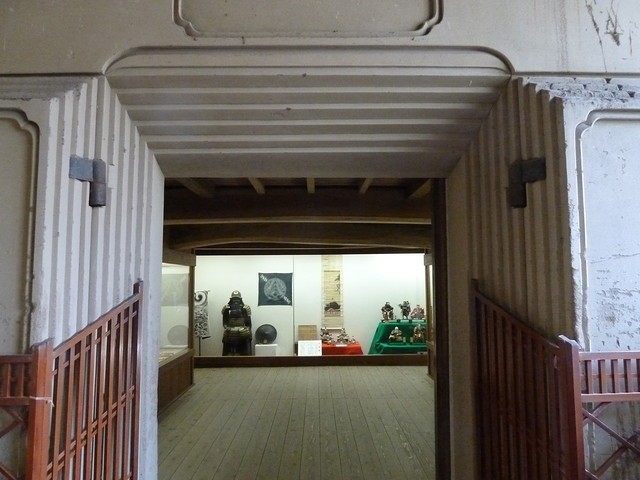
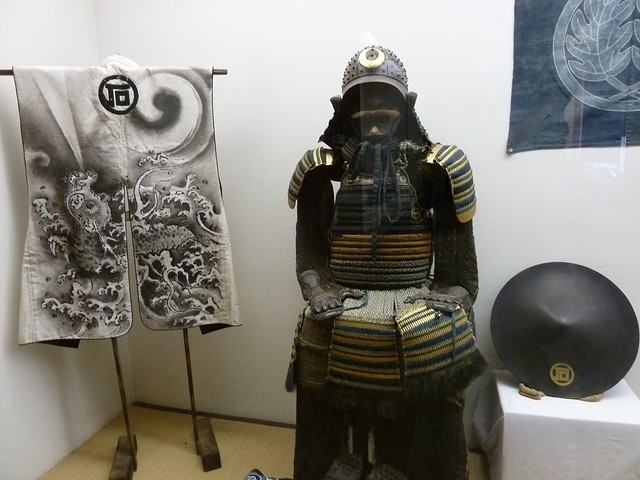
Walking back south towards the station the next house is the Aoyagi Samurai Manor Museum with an armoury, folk museum, tools and utensils museum, tea room and restaurant in addition to the main house. The Aoyagi dynasty dates back to the 16th century as vassals to the local daimyo and has survived the changes brought about by the Meiji restoration and their descendants became the local mayor. The main house has an L shaped floor plan with several entrances according to status and the building has a thatched roof. The garden is home to a unique variety of 8 petalled weeping red cherry
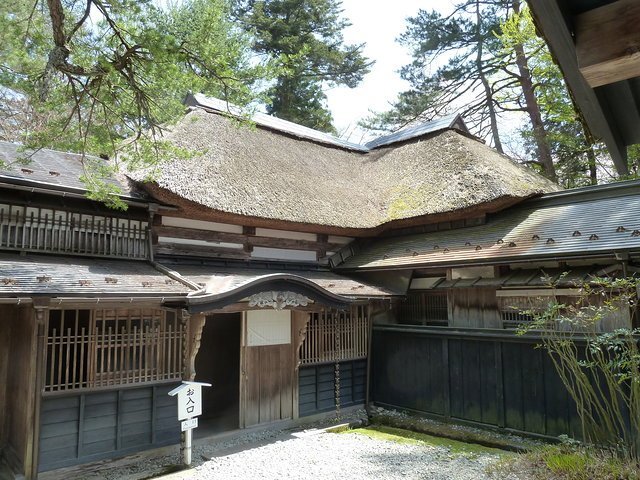
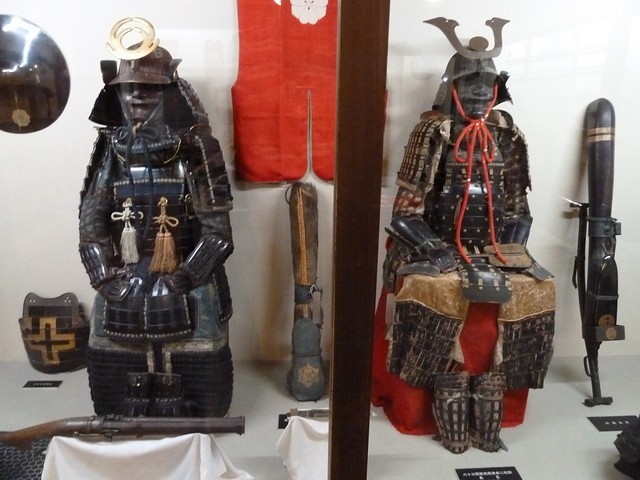
The Iwashi, Karawada and Matsumoto houses line the Buke Yashiki dori and are available for the public to view from the outside only. These were the homes of middle ranking samurai and somewhat smaller than that of the Ishiguro and Aoyagi houses.
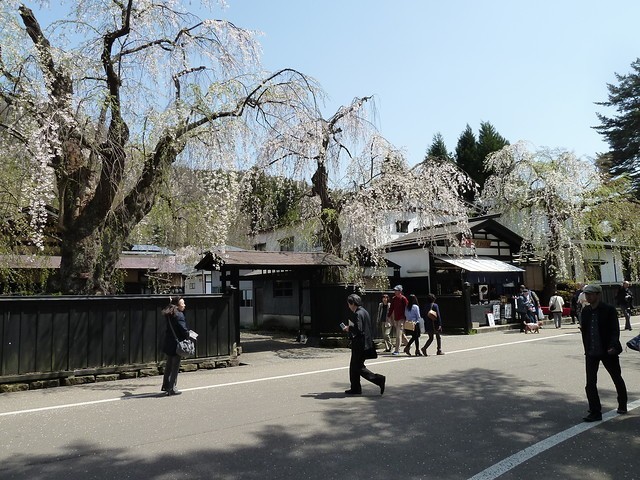
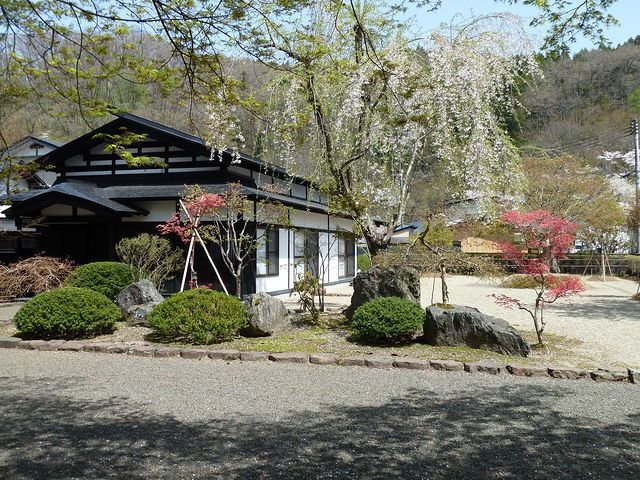
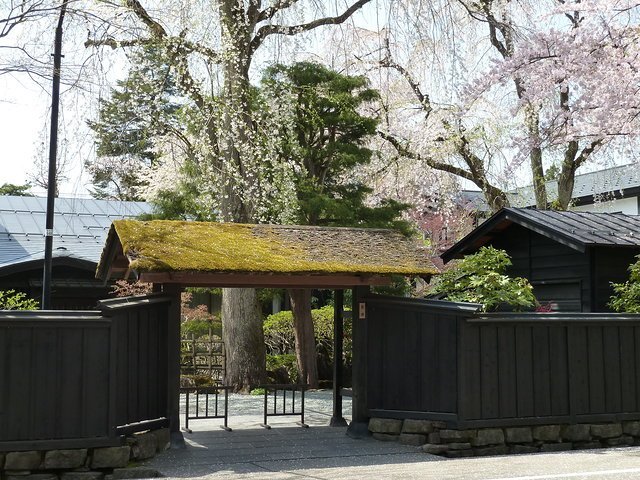
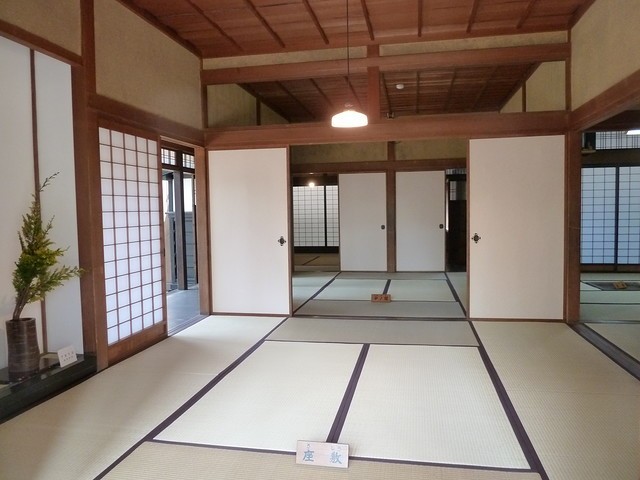
The Nishinomiya house, originally the home of a prosperous merchant family is a Meiji period house that has a shop and restaurant and is more of a commercial enterprise. The interior has an interesting high vaulted roof.
The final planned visit of the day was to the Ando miso brewery in the merchants quarter, established in 1853, it is a brick built building in contrast to the wooden buildings of the samurai quarter.
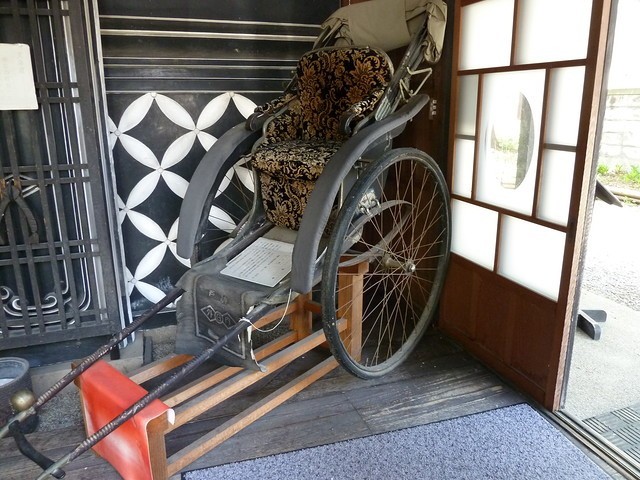
However on my way back to the station, I discovered Tennei-ji temple, the family temple of the Ashina clan who built the samurai houses in Uchimachi district. The approach had a few cherry trees still in full bloom.
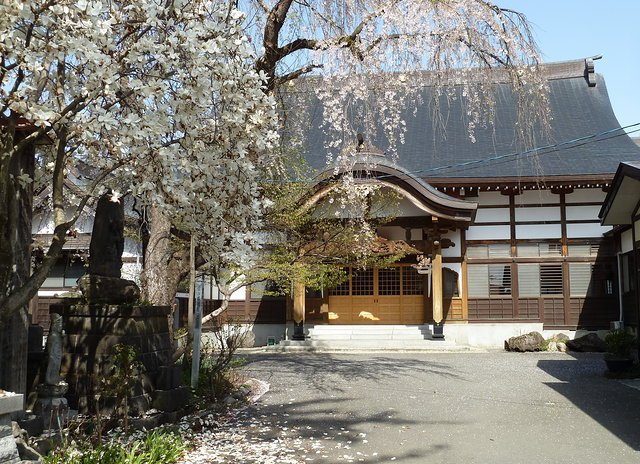
| previous post |
| next post |
|
List of Posts:
2017/07/25 - Japan's tectonic landscape reflected in the gardens 2017/07/15 - Flora of Japan 2016/04/27 - Time in Asakusa 2016/04/25 - Kakunodate 2016/04/23 - A Thousand Cranes 2016/04/22 - Castle in the Clouds 2016/04/21 - The beauty of Koraku-en 2016/04/20 - Far from the Madding Kyoto Crowds - Part 1 2016/04/20 - Far from the Madding Kyoto Crowds - Part 2 2016/04/18 - A Day in the Mountains 2016/04/17 - Delights of Hikone 2016/04/16 - Nara Revisited 2015/01/03 - Kamakura temples and gardens 2015/01/01 - Takayama Temple Trail 2014/12/29 - Kurama - Kibune hiking trail 2014/11/10 - A visit to Himeji 2014/11/05 - Shigemori Mirei - The Rebel in the Garden 2014/11/04 - Arashiyama and nearby sights 2014/11/03 - The less visited sites of Nara 2014/11/03 - The gems of Matsue 2014/10/31 - Agon-shu Monastery 2014/10/30 - In the footsteps of the Shogun 2014/10/30 - Tale of the Genji |